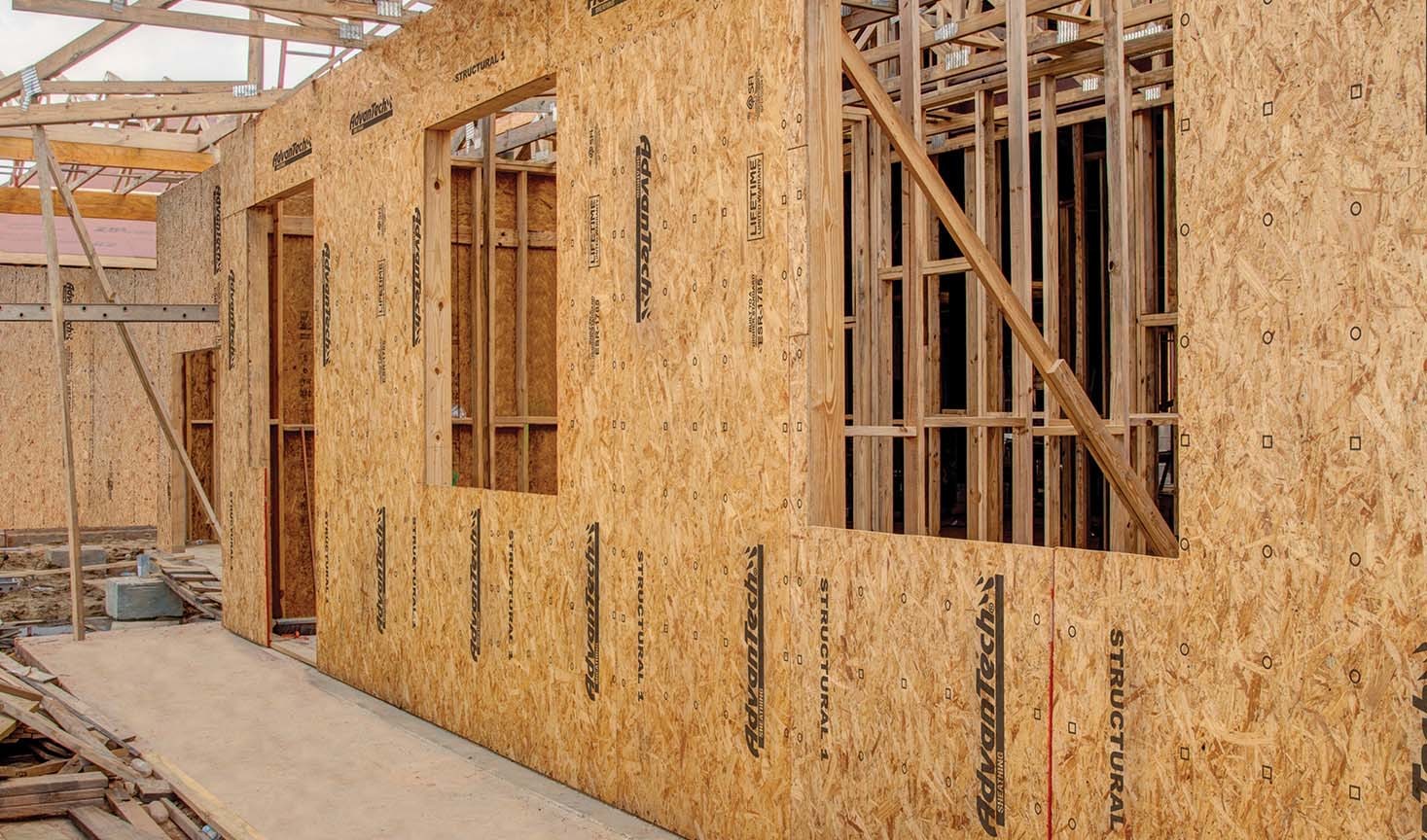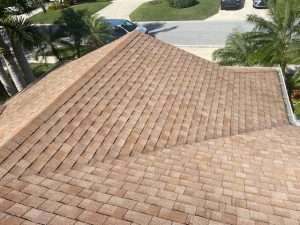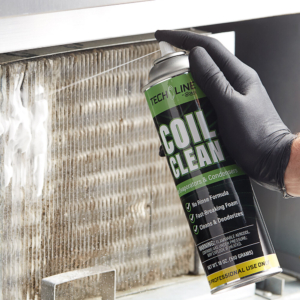Exterior Sheathing:
Types, Benefits, and Installation
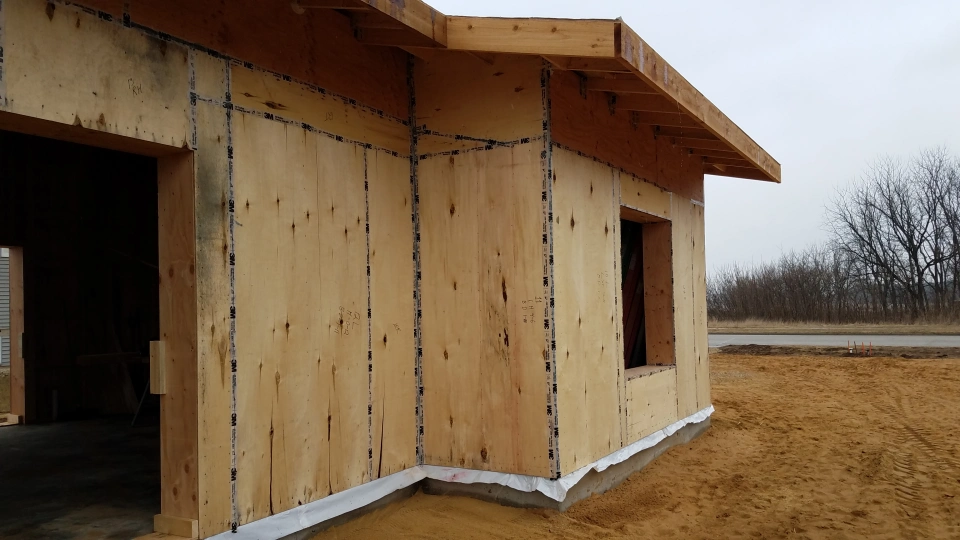
Exterior sheathing is a critical component of any building’s construction. It is vital in providing structural stability and protection against external elements. Whether you’re constructing a new home or renovating an existing one, understanding the importance of exterior sheathing is essential. In this blog post, we will explore the various types of sheathing materials available, their benefits, and how to choose the right one for your project. By the end, you will have a comprehensive understanding of exterior sheathing and be well-equipped to make informed decisions for your construction endeavors.
Exterior Sheathing: Definition and Importance
Exterior sheathing can be defined as a material applied to the outer layer of a building’s frame, providing structural support, insulation, and weather resistance. It is typically made from wood-based panels, such as plywood or oriented strand board (OSB), or alternatively, from gypsum or cement boards.
The primary purpose of exterior sheathing is to create a strong and durable barrier that shields the underlying structure from the elements. It helps to distribute the structural loads evenly across the walls and contributes to the overall stability and integrity of the building.
Importance of Exterior Sheathing
- Structural Support: Exterior sheathing adds strength to the building’s framework, enhancing its load-bearing capacity. By providing a stable base, it helps the walls withstand the forces exerted by wind, seismic activity, or heavy loads. This structural reinforcement prevents the walls from flexing, reducing the risk of cracks and other structural damages.
- Weather Resistance: One of the primary functions of exterior sheathing is to protect the building from the harsh effects of weather conditions. It acts as a barrier against moisture, preventing water infiltration into the walls. This is particularly important in regions with high rainfall or extreme temperature fluctuations. Additionally, exterior sheathing helps to reduce drafts and improve energy efficiency by providing an extra layer of insulation.
- Fire Resistance: Certain types of exterior sheathing, such as gypsum or cement boards, possess inherent fire-resistant properties. These materials can help slow down the spread of flames in the event of a fire, providing valuable time for occupants to evacuate and reducing the potential damage to the structure.
- Support for Finishes: Exterior sheathing also serves as a surface for attaching exterior finishes, such as siding or stucco. It provides a flat, even substrate for these finishes, ensuring a smooth and aesthetically pleasing exterior appearance.
Types of Exterior Sheathing
When it comes to choosing the right type of exterior sheathing for your building project, there are several options available. Each type of sheathing material has its own unique features and benefits. In this section, we will explore four common types of exterior sheathing: Plywood Sheathing, OSB Sheathing, Fiber Cement Sheathing, and Gypsum Sheathing.
Plywood Sheathing
Plywood sheathing is a popular choice for exterior walls due to its strength and durability. It is made from thin layers of wood veneer that are glued together, creating a sturdy panel. Plywood sheathing is resistant to moisture and can withstand high winds, making it suitable for areas prone to extreme weather conditions. It is also easy to work with and provides a solid base for attaching siding materials.
OSB Sheathing
Oriented Strand Board (OSB) sheathing is another commonly used type of exterior sheathing. It is made from strands of wood that are compressed and bonded together with adhesives. OSB sheathing is known for its strength and affordability. It is resistant to moisture and offers good dimensional stability. OSB sheathing is often used in construction projects where cost-effectiveness is a priority.
Fiber Cement Sheathing
Fiber cement sheathing is a non-combustible option that is composed of cement, sand, and cellulose fibers. It is highly durable, resistant to fire, moisture, and insects. Fiber cement sheathing provides excellent thermal insulation and can help improve the energy efficiency of a building. It is also resistant to warping, rotting, and decay, making it a long-lasting choice for exterior walls.
Gypsum Sheathing
Gypsum sheathing, also known as drywall, is a lightweight and cost-effective option for exterior sheathing. It is made from a core of gypsum sandwiched between two layers of paper. Gypsum sheathing provides good fire resistance and sound insulation. It is easy to install and offers a smooth surface for finishing with paint or other decorative materials. However, it is important to note that gypsum sheathing is not suitable for areas with high moisture levels.
Benefits of Exterior Sheathing
Exterior sheathing is an essential component of any building’s envelope, providing a range of benefits that contribute to the overall performance and longevity of the structure. From structural support to moisture resistance, thermal insulation, and noise reduction, exterior sheathing plays a vital role in protecting and enhancing the building. Let’s explore these benefits in more detail:
Structural Support
One of the primary benefits of exterior sheathing is its ability to provide structural support to the building. By acting as a stable and rigid layer, sheathing helps distribute the load evenly across the entire structure, enhancing its strength and stability. This is particularly crucial in areas prone to high wind or seismic activity, as sheathing helps to fortify the building against these external forces, reducing the risk of damage or collapse.
Moisture Resistance
Moisture intrusion can wreak havoc on a building, causing mold, rot, and a host of other issues. Exterior sheathing acts as a barrier against moisture, preventing it from penetrating the walls and compromising the structural integrity. With proper installation and the right choice of materials, such as water-resistant or waterproof sheathing, you can effectively safeguard your building from water damage, ensuring its longevity and reducing maintenance costs.
Thermal Insulation
In an era where energy efficiency is paramount, exterior sheathing plays a crucial role in providing thermal insulation. By adding an extra layer of insulation to the building envelope, sheathing helps reduce heat transfer between the interior and exterior, minimizing the need for excessive heating or cooling. This not only enhances occupant comfort but also results in significant energy savings and lower utility bills. Whether it’s a hot summer day or a cold winter night, the thermal insulation properties of exterior sheathing contribute to a more comfortable indoor environment year-round.
Noise Reduction
Exterior sheathing also has the added benefit of reducing noise transmission from the outside. By acting as a sound barrier, it helps keep unwanted noise at bay, creating a quieter and more peaceful living or working environment. Whether you’re located in a bustling urban area or near a busy road, the use of sheathing with sound insulation properties can significantly reduce noise pollution, allowing occupants to enjoy a more serene ambiance within the building.
Factors to Consider When Choosing Exterior Sheathing
When it comes to choosing the right exterior sheathing for your building project, there are several important factors that need to be taken into consideration. These factors include climate and weather conditions, building codes and regulations, cost and budget, as well as durability and longevity. By carefully evaluating these aspects, you can ensure that you select the most suitable sheathing material for your specific needs.
Climate and Weather Conditions
The climate and weather conditions of your location play a crucial role in determining the ideal exterior sheathing for your building. Different regions experience varying levels of moisture, temperature fluctuations, wind, and exposure to extreme weather events. It is essential to choose a sheathing material that can effectively protect your structure against these elements.
For areas with high humidity or heavy rainfall, sheathing materials with moisture resistance properties, such as cement board or plywood treated with water-resistant coatings, can be a good option. In regions prone to extreme heat or cold, insulation properties of the sheathing material should be considered to enhance energy efficiency and thermal comfort.
Building Codes and Regulations
Adhering to building codes and regulations is vital for ensuring the safety and structural integrity of your building. Before selecting exterior sheathing, it’s crucial to familiarize yourself with the local building codes and regulations in your area. These codes may dictate the types of materials that are approved for use and specify requirements such as fire resistance, structural strength, and overall performance standards.
For example, in areas at high risk of wildfires, sheathing materials with enhanced fire resistance, such as gypsum board or fiber cement, may be required. Consulting with a building professional or local authorities can provide valuable guidance in choosing sheathing that complies with the necessary codes and regulations.
Cost and Budget
Another significant factor to consider when selecting exterior sheathing is the cost and budget of your project. Different sheathing materials vary in price, and it’s important to find a balance between affordability and the desired performance characteristics.
For those on a tight budget, oriented strand board (OSB) or traditional plywood can offer cost-effective options without compromising durability. However, if long-term longevity and higher performance are priorities, investing in materials like fiber cement or mineral wool insulation sheathing may be more suitable, even if they come at a slightly higher cost.
Durability and Longevity
The durability and longevity of exterior sheathing are crucial for the overall lifespan and maintenance of your building. Choosing a material that withstands the test of time, requires minimal upkeep, and resists damage from environmental factors is essential for long-term satisfaction.
Sheathing materials like fiber cement, engineered wood, or metal composite panels are known for their durability and resistance against insects, rot, and moisture. Additionally, considering the longevity of the product will help you avoid premature replacements and potential future expenses.
When selecting exterior sheathing, it is essential to evaluate the specific requirements of your project in terms of climate, codes, budget, and durability. By taking these factors into account, you can make an informed decision that ensures the optimal performance and protection of your building for years to come.
Common Issues with Exterior Sheathing
Water Damage and Rot
One of the most significant concerns with exterior sheathing is the potential for water damage and rot. When moisture infiltrates the sheathing, it can lead to structural issues, compromising the stability and longevity of the building. Over time, this water intrusion can cause the sheathing to deteriorate, leading to costly repairs.
To prevent water damage and rot, proper installation techniques and the use of moisture barriers are crucial. Regular inspections and maintenance can also help identify any potential vulnerabilities, allowing for timely repairs.
Mold and Mildew
Another common issue associated with exterior sheathing is the growth of mold and mildew. These fungal organisms thrive in moist environments, and if left unchecked, they can cause health concerns and further structural damage.
Mold and mildew not only compromise the aesthetic appeal of the building but can also weaken the sheathing over time. Adequate ventilation, moisture control, and use of mold-resistant materials are vital in preventing the growth and spread of these harmful substances.
Insect Infestation
Insects, such as termites or carpenter ants, can pose a serious threat to exterior sheathing. These pests are attracted to the cellulose present in wood-based products, making sheathing an enticing food source. If left untreated, an insect infestation can weaken the sheathing, compromising its structural integrity.
Regular inspections, pest control measures, and the use of insect-resistant materials can help mitigate the risk of insect infestation and preserve the integrity of the sheathing.
Improper Installation
Improper installation practices can also contribute to issues with exterior sheathing. If the sheathing is not installed correctly, it may not provide the necessary structural support or weather resistance. Gaps, improper fastening, or improper sealing can lead to water infiltration, air leaks, and other problems.
To avoid these issues, it is crucial to follow manufacturer guidelines and industry best practices during the installation process. Hiring qualified professionals who are experienced in installing exterior sheathing can help ensure proper installation and minimize the risk of future complications.
Conclusion
In conclusion, exterior sheathing plays a crucial role in the structural integrity and energy efficiency of a building. It acts as a protective barrier against external elements such as moisture, wind, and heat. With advancements in technology and materials, it is important to choose the right type of sheathing for your specific project.
When selecting exterior sheathing, consider factors such as climate, building codes, and the desired level of insulation. Whether it’s plywood, oriented strand board (OSB), or a newer alternative like rigid foam insulation, each has its own advantages and disadvantages.
To optimize the performance of exterior sheathing, proper installation and maintenance are essential. This includes sealing all seams and penetrations to prevent air and water infiltration. Regular inspections can help identify any potential issues and ensure that the sheathing continues to protect the building effectively.
By understanding the importance of exterior sheathing and making informed choices, you can enhance the durability and energy efficiency of your building, ultimately saving on maintenance costs and creating a comfortable living or working environment.


